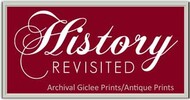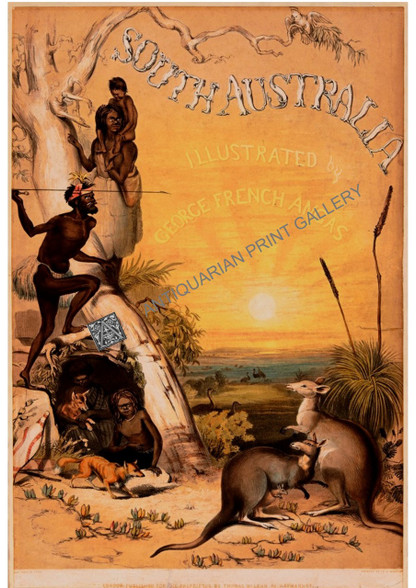 Loading... Please wait...
Loading... Please wait...All prices are in All prices are in AUD
Categories
- Home
- Giclee Prints
- Giclee Angas Hawkins South Australia Illustrated Title Page
- Home
- Giclee Prints
- Botany
- Giclee Angas Hawkins South Australia Illustrated Title Page
- Home
- Giclee Prints
- South Australian Scenes
- Giclee Angas Hawkins South Australia Illustrated Title Page
- Home
- Giclee Prints
- Australasian Natural History
- Giclee Angas Hawkins South Australia Illustrated Title Page
- Home
- Giclee Prints
- Australasian Natural History
- British Colonial Animals
- Giclee Angas Hawkins South Australia Illustrated Title Page
- Home
- Giclee Prints
- South Australian Scenes
- George French Angas 1846-47
- Giclee Angas Hawkins South Australia Illustrated Title Page
Product Description
Giclee, George French Angas, South Australia Illustrated, Illustrated Title Page, Benjamin Hawkins, Australian fauna, Australian flora, Aborigines
Archival limited edition giclee print ( /300) after the original hand colored lithograph by J.W. Giles after artist George French Angas for his ambitious publication "South Australia Illustrated".
Originally published in London between 1846 - 47, the prints were sold to 200 subscribers, eager to see what this brave British prototype freely-settled colony had to offer after a decade of settlement. How many of those 200 original hand colored lithographs still exist has prompted issuing this high quality light-safe inkjet process printed on cotton conservation paper.
Size of Image = 37cm x 54cm (21 1/4 x 14 1/2 inch)
Issued with Archival Limited Edition certificate.
George French Angas
George French Angas was the eldest son of London Financier, George Fife Angas. He declined the opportunity to join the family firm, but rather determined to follow his artistic nature. Instead he ventured to this new colony his Baptist father had invested in, South Australia Company. George French Angas ("French" was his mother's nee name) set about recording the wonders of this new prototype freely settled British colony through commissions & offering his artistic services to explorers, notablely the Governor George Grey's venture to the South East to Mount Gambier. It is in the decorative insets illustrations on Grey's map we see evidence of the the subsequent paintings of the Mount Gambier's Blue Lake and Devil's Punch Bowl sent back to the London publisher to be lithographed.
Having gone against his father's wishes, his financial training was a great influence none-the-less: before he left he engaged a lithographic publisher, Thomas McLean, to lithograph the paintings he would eventually send back to London, to be incrementally issued to 200 subscribers. As George French Angas would spend many years in the Southern hemisphere in other British Colonies, it fell to Benjamin Waterhouse Hawkins (1807-1889) to design the decorative frontis piece, aka title page, cherry-picking Antipodean features from Angas' painting. Indeed Angas had been trained by Hawkins in anticipation of his desired adventure to South Australia, New Zealand and, finally, South Africa.
In Angas' paintings of the local Adelaide Plains indigenous inhabitants, he was accurate in his renderings. As a consequence Angas recorded them with an anthropological eye for detail, recording their traditional clothing, but more often, wearing nothing at all. However, as much as we see shadows of his original portraits, Hawkins infuses the British desire to stereotypical interpretation, yearning to convey a romantic, exotic edge, without the more shockingly accurate features. The London lithographers/artists modified his honest renderings to suit the Victorian tastes of the era, hence clothing them with European clothes. Another stereotypical misrepresentation was the bone piercing in the nose of the male brandishing spear in the tree hollow to the left aimed at the Kangaroos in the right foreground. Bone nose piercings were not practiced by the the Adelaide Plains tribes.
British artists often confused Australian Aborigines with Maoris and other Pacific Islanders, proof that they were not painting from "insitu" observation, but a general idea of the Antipodean inhabitants.
On the other hand, the iconic Grass Tree, or Xanthorrhoea australis, illustrated behind the kangaroos to the right, is sympathetically rendered. This South Australian botanical specimen was first formally described by the botanist Robert Brown in 1810, who accompanied Matthew Flinders (1800-1804) in his discovery of the South Australian coast. It also serves as an exotic floral depiction, in an age of botanical wonderment.
Further evidence of Angas' lack of contribution to the title page illustration may be the inclusion of the Kangaroos the right foreground, having more in common with the famous George Stubbs' attempt from the inflated kangaroo skin in 1772. The tails lack the muscular attributes an artist would record from observation in its natural habitat, and possibly dissection, that was common. Then there is the inclusion of the "native dog" in the hollow, with its bushy fox-like tail, having more in common anatomically with a fox. Again, this would have been artistic license on behalf of Hawkins, possibly to make the scene more familiar to the British public. The inclusion of the Emu in the middle distance, & Sulphur-crested Cockatoo on the Eucalyptus branch reaching across to the upper right corner, are another two well established Australian icons by the 1830s.
Product Videos
-
 Saved for the ...Waldemar Januszczak celebrates the successful 'Save our Stubb...
Saved for the ...Waldemar Januszczak celebrates the successful 'Save our Stubb...
Product Reviews
-
Love the pet Dingo Fox

Posted by Aparecida on 25th May 2012
Fantastic that an early colonial artist got out of his head that "Noble Savage" idea and actually painted what he saw. These are the most sympathetically rendered Indigenous Australians I have seen (albeit some of the additions-bone in the nose, clothes, foxes for dingoes-by the lithographers back in London!
-
Rare as Hen's Teeth

Posted by Tony Simkins on 13th Oct 2011
For anyone interested in South Australian heritage this is where it all starts being recorded.












